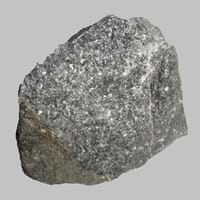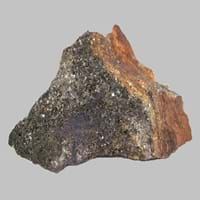Definition
Andesite is a dark, fine-grained, brown or greyish intermediate volcanic rock which is a commonly found in lava
Hornfels is a metamorphic rock formed by the contact between mudstone or other clay rich rock, and a hot igneous body, and represents a heat altered equivalent of the original rock
Origin
North America
New Zealand
Discoverer
Unknown
Unknown
Etymology
From Andes mountains, where it is found in abundance
From German which means hornstone
Class
Igneous Rocks
Metamorphic Rocks
Sub-Class
Durable Rock, Hard Rock
Durable Rock, Soft Rock
Group
Volcanic
Not Applicable
Other Categories
Fine Grained Rock, Opaque Rock
Fine Grained Rock, Opaque Rock
Texture
Aphanitic to Porphyritic
Granular, Platy
Color
Bluish - Grey, Grey, Pink, Yellow
Brown, Dark Greenish - Grey, Green, Reddish Brown
Durability
Durable
Durable
Appearance
Dull and Soft
Dull
Interior Uses
Decorative Aggregates, Floor Tiles, Homes, Interior Decoration, Kitchens
Decorative Aggregates, Flooring, Homes, Interior Decoration
Exterior Uses
Office Buildings, Roof Tiles
As Building Stone, As Facing Stone, Garden Decoration, Office Buildings, Paving Stone
Other Architectural Uses
Curbing
Curbing
Construction Industry
Cobblestones, Construction Aggregate, for Road Aggregate
for Road Aggregate, Roadstone
Medical Industry
Not Yet Used
Not Yet Used
Antiquity Uses
Artifacts, Monuments, Sculpture, Small Figurines
Artifacts, Monuments
Commercial Uses
Commemorative Tablets, Creating Artwork
Cemetery Markers, Commemorative Tablets, Creating Artwork
Types
Icelandite
Biotite hornfels
Features
Generally rough to touch, High silica content, Is one of the oldest rock
Smooth to touch
Archaeological Significance
Famous Monuments
Middle of the Earth in Ecuador
Data Not Available
Sculpture
Used
Not Yet Used
Famous Sculptures
Data Not Available
Not Applicable
Pictographs
Not Used
Used
Petroglyphs
Not Used
Used
Figurines
Used
Not Yet Used
Formation
Andesite is a fine-grained igneous rock that forms when the magma is erupted onto the surface and is crystallized quickly.
Due to change in environmental conditions, rocks are heated and pressurized deep inside the Earth's surface. Hornfels is formed from the extreme heat caused by magma or by the intense collisions and friction of tectonic plates.
Mineral Content
Amphibole, Apatite, Biotite, Feldspar, Garnet, Hornblade, Ilmenite, Magnetite, Plagioclase, Pyroxene, Zircon
Andalusite
Compound Content
Silicon Dioxide
Fe, Mg
Types of Metamorphism
Burial Metamorphism, Cataclastic Metamorphism, Contact Metamorphism, Hydrothermal Metamorphism, Impact Metamorphism, Regional Metamorphism
Not Applicable
Types of Weathering
Biological Weathering, Chemical Weathering, Mechanical Weathering
Biological Weathering
Types of Erosion
Chemical Erosion, Coastal Erosion, Glacier Erosion
Chemical Erosion, Glacier Erosion, Sea Erosion, Water Erosion, Wind Erosion
Grain Size
Very fine-grained
Fine Grained
Fracture
Uneven
Conchoidal
Porosity
Less Porous
Highly Porous
Cleavage
Not Available
Perfect
Toughness
1.1
Not Yet Found
Specific Gravity
2.5-2.8
3.4-3.9
Transparency
Opaque
Opaque
Density
2.11-2.36 g/cm3
0.25-0.30 g/cm3
Resistance
Heat Resistant, Pressure Resistant, Wear Resistant
Heat Resistant, Impact Resistant, Pressure Resistant
Deposits in Eastern Continents
Asia
India, Indonesia, Japan, Nepal, South Korea
Bangladesh, Bhutan, China, India, North Korea, Qatar, Russia, Saudi Arabia, South Korea, Thailand
Africa
Egypt, Ethiopia, Morocco, Namibia, South Africa, Tanzania
Cameroon, East Africa, Tanzania, Western Africa
Europe
Austria, Finland, Germany, Italy, Romania, Turkey, United Kingdom
United Kingdom
Others
Not Yet Found
Not Yet Found
Deposits in Western Continents
North America
Mexico, USA
Canada, USA
South America
Argentina, Bolivia, Chile, Colombia, Ecuador, Peru, Venezuela
Bolivia, Brazil, Colombia, Ecuador
Deposits in Oceania Continent
Australia
New South Wales, New Zealand, Western Australia
New South Wales, New Zealand, Queensland, Western Australia










